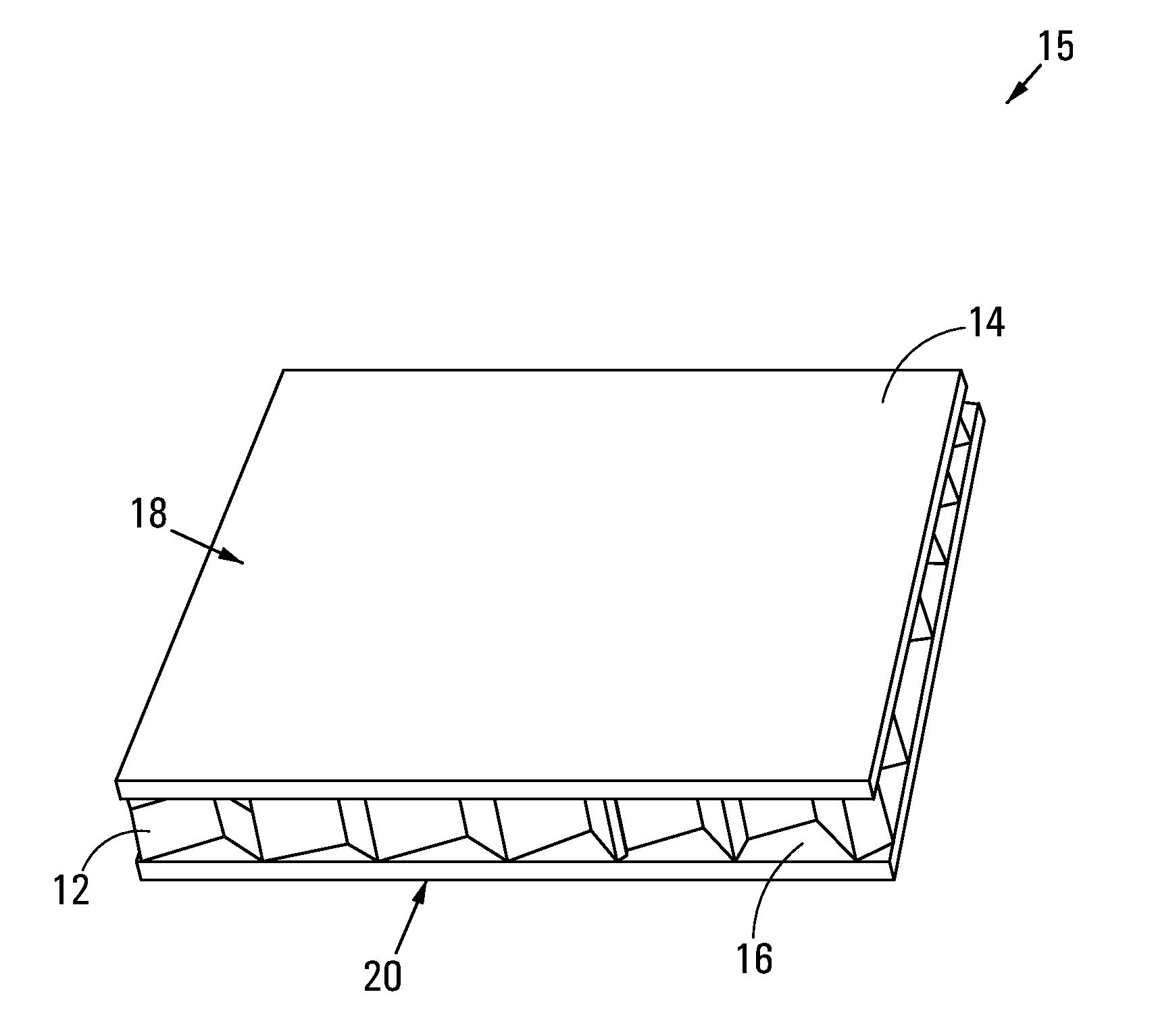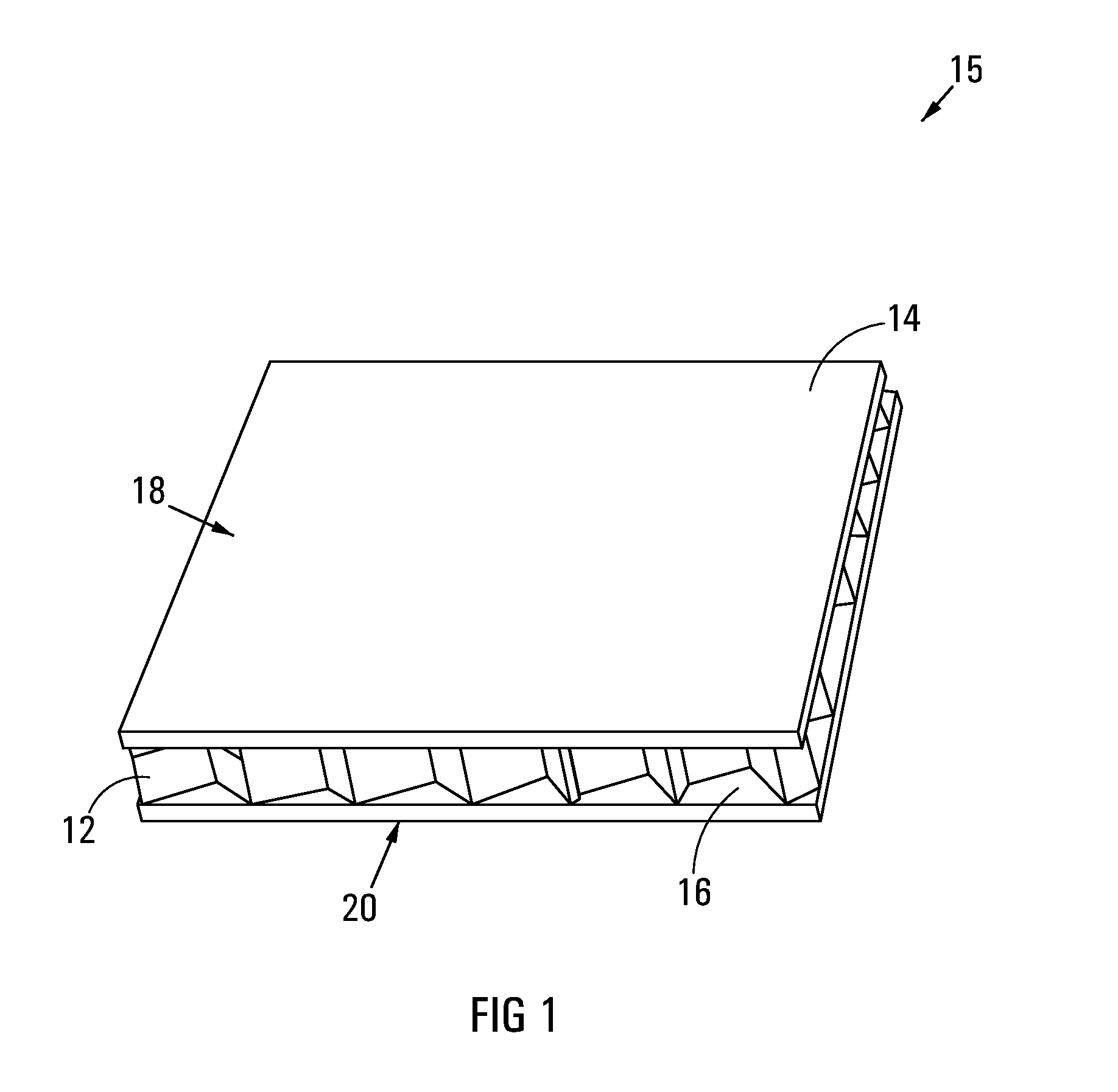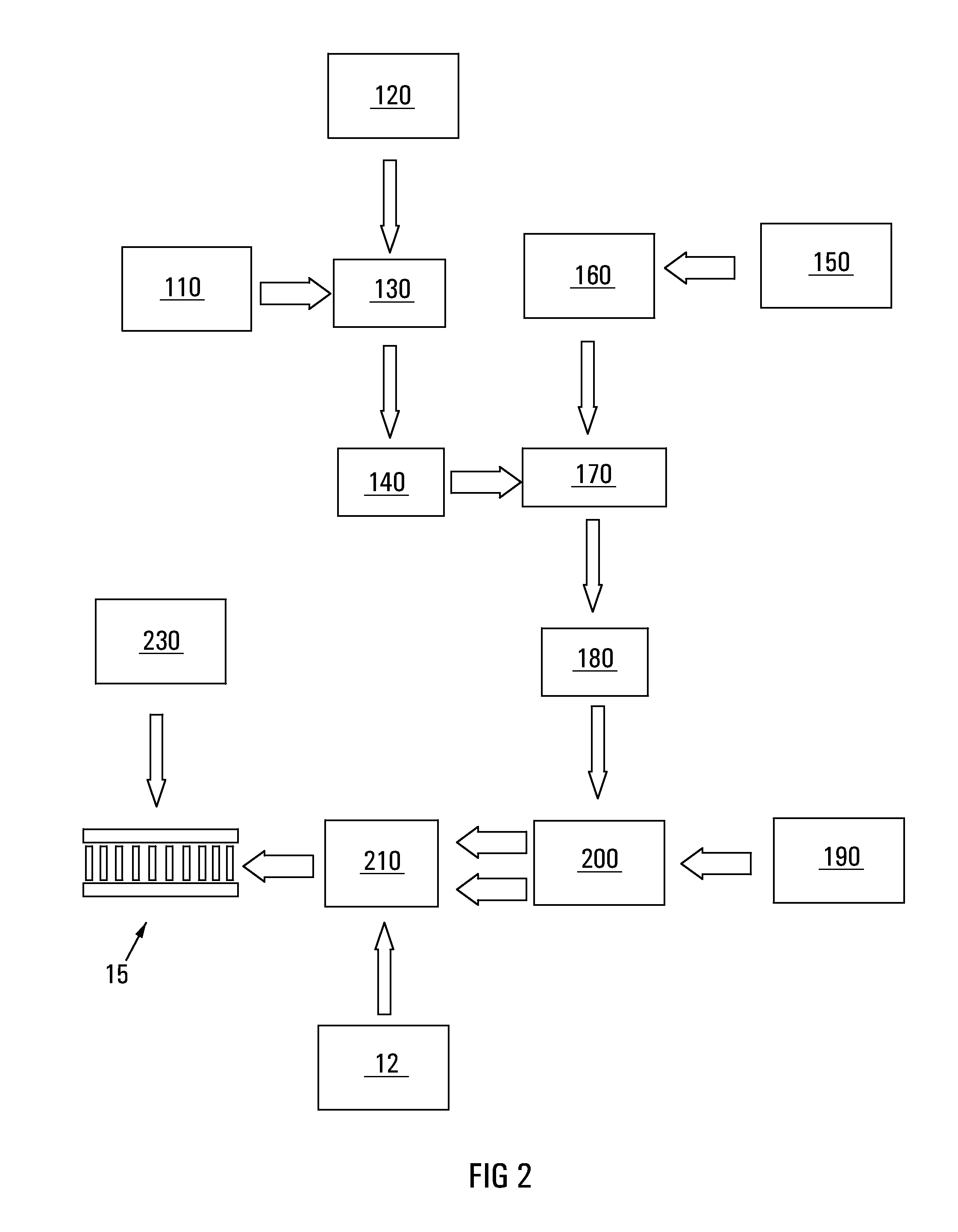Flame-Proofed Artefact and a Method of Manufacture Thereof
- Summary
- Abstract
- Description
- Claims
- Application Information
AI Technical Summary
Benefits of technology
Problems solved by technology
Method used
Image
Examples
Embodiment Construction
[0088]Referring to FIG. 1, an embodiment of a flame-proofed artefact in accordance with the invention is designated generally by reference numeral 15. The artefact 15 is in the form of a panel and is suitable for use in aircraft. The panel 15 includes a honeycomb core 12 and cured skins 14 and 16, between which the core 12 is sandwiched. It should be noted that, instead of a honeycomb core, foam can be used as a core for making artefacts, such as panels, suitable for use in other applications, such as in construction of buildings, for example.
[0089]The cured skins 14 and 16 each include natural fibres impregnated with a resin composition, the natural fibres having been treated with a non-halogenated flame retardant agent prior to being impregnated with the resin composition. Outer surfaces 18, 20 of the panel 15 (i.e. the outer surfaces of the cured skins 14, 16) are coated with vermiculite.
[0090]The cured skins 14, 16 are formed from pre-pregs, which are then cured. In this example...
PUM
| Property | Measurement | Unit |
|---|---|---|
| Temperature | aaaaa | aaaaa |
| Temperature | aaaaa | aaaaa |
| Temperature | aaaaa | aaaaa |
Abstract
Description
Claims
Application Information
 Login to View More
Login to View More - R&D
- Intellectual Property
- Life Sciences
- Materials
- Tech Scout
- Unparalleled Data Quality
- Higher Quality Content
- 60% Fewer Hallucinations
Browse by: Latest US Patents, China's latest patents, Technical Efficacy Thesaurus, Application Domain, Technology Topic, Popular Technical Reports.
© 2025 PatSnap. All rights reserved.Legal|Privacy policy|Modern Slavery Act Transparency Statement|Sitemap|About US| Contact US: help@patsnap.com



